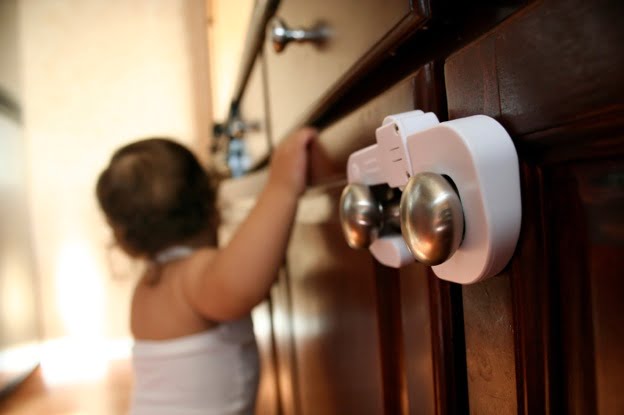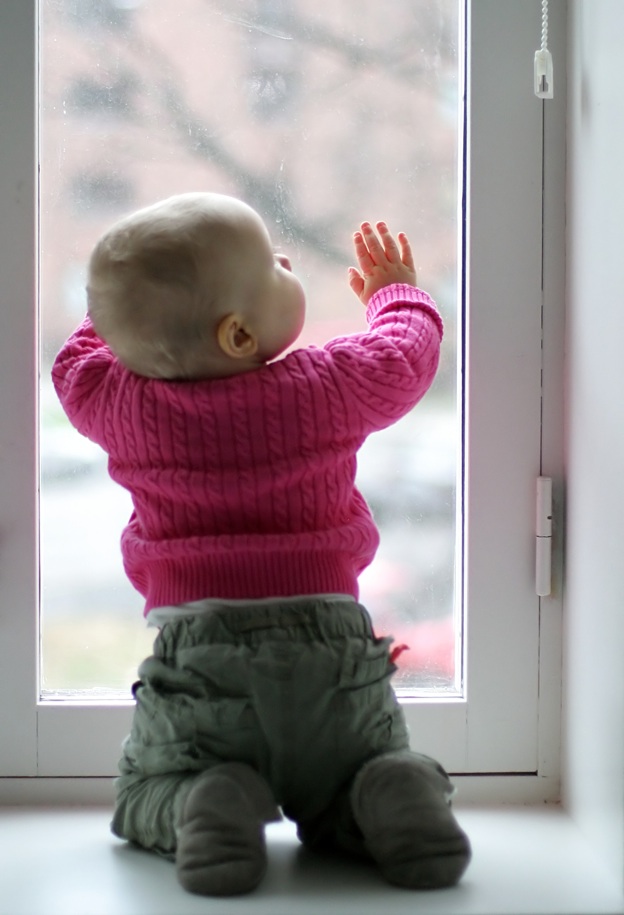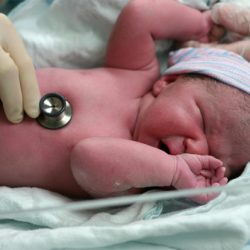SingaporeMotherhood | Parenting
August 2012
Safety First: How To Baby-Proof Your Home

In the midst of the joy of anticipating baby’s arrival, we often forget something crucial – or figure that it can be dealt with later – making your home safe for baby. And yes, although baby won’t really be mobile for the first few months, it’s a good idea to begin baby-proofing the home now. After all, time flies, and once your baby becomes a walking, climbing, little tot, you’ll be so caught up in every adorable moment that you may not have time.
Most of the injuries at home occur due to trips or slips and falls, warns Dr Tham Lai Peng, Senior Consultant in the department of Paediatric Emergency Medicine at KK Women’s & Children’s Hospital. Other mishaps include young children falling through open windows from high-rise flats — with fatal results, and scalds and burns due to hot fluids being placed within reach of young children.
“Parents need to supervise their children at all times,” Dr Tham says. Remember, where a child’s safety is concerned, an ounce of prevention equals a pound of cure. So how do you start baby-proofing your home to make it safer for your little ones?
1. Go on a Crawl-About
“Look at the world from baby’s point-of-view,” suggests Executive Director at Mothercare Singapore, Pang Shu Ming. This means getting down on your hands and knees to experience what they might see and to begin making alterations from that level! Make sure you get a baby’s eye view of every nook and cranny in the house to ensure that all the bases are covered.
2. Make a Bucket List
Write down what needs to be done in each area so that you can cross it out as you make the fixes. Note what should be altered, moved or removed. Make a shopping list of what to get at the baby-safety section of a DIY or department store.
Ms Pang recommends the following: “Socket covers, drawer latches, door stoppers, edge guards for sharp corners and edges, window latches and grilles, and safety gates. Also consider a playpen for when you need to leave baby unattended for short periods of time.”
Where to Begin
The Nursery
Start with the place where your baby will be spending the most time. Ensure that her mattress fits snugly in the cot; you should not be able to fit more than a finger between the mattress and the cot frame. For the first months, keep the cot free of heavy pillows, blankets and stuffed toys, all of which can be suffocation hazards. Keep the cot away from windows and curtains.
Furniture and Ornaments
Are there pieces of furniture such as bookshelves, which may topple over if your crawling baby uses them to pull herself up? These will need to be secured to the walls. Also place heavier objects lower down, to prevent shelves from being ‘top heavy’ and avoid placing breakable ornaments such as vases on coffee tables and TV cabinets. Sharp corners of tables and cupboards will require soft bumpers as well.
Dr Tham advises, “Avoid over-cluttering with too much furniture, so as to avoid trips and falls. Refrain from placing tablecloth or mats on the dining table – hot foods and fluids can spill over when the tablecloth or mat is pulled by curious little hands.”
Bits to Lock Down
Natural curiosity should be encouraged in any child, but this can pose significant safety risks, especially when the objects of her inquisitiveness include power outlets, sliding drawers, cupboards, the refrigerator and even the toilet. Stores like Mothercare and Ikea stock gadgets geared towards securing these specific areas, so be sure to note down all the targets which need safety locks or covers.
Cords, Cords, Cords
Are there cords hanging from curtains or window blinds? Tie them up and secure them well. What about electrical cords from kitchen appliances, entertainment systems and computers? Use cable ties and cord winders to ensure that none of these are left hanging loosely as they can pose a strangulation threat.
Block Escape Routes
Door stoppers and latches on sliding glass doors and windows can be the difference between a smiling baby and one whose tiny fingers have been caught and injured. Windows should have securely locked grilles. Ensure that there is no furniture nearby that a budding Tarzan can use to get a leg up.
If your home has staircases, ensure they are properly gated with screws and bolts. Never use pressure-mounted gates at the top of the stairs, as a persistent toddler may be able push or pull hard enough on them to break the pressure mount.
Also, keep in mind that as baby grows, what started out as a safety precaution may turn into another safety hazard. Patsy Teo, 38-year-old teacher and mother of three children aged two to seven, recalls, “We installed a baby gate at the top of the stairs initially but it became even more dangerous later because they kept trying to climb over it.”
Danger Zones
The kitchen is probably the one room in every home with the largest number of potential hazards: shiny knives and forks, hot surfaces like ovens and kettles, and interesting handles sticking out from stovetops. Ensure that all sharp objects are kept out of reach and all pot handles are turned sideways into the stove-top so that a curious toddler cannot get to them.
Another common scene of household accidents is the bathroom. Place non-slip mats on the floor. Keep toilet seats covered, and bathtubs, pails and basins drained of water. Remember that a child can drown in as little as two inches of water and even near-drowning incidents can result in major and often irreversible damage.
Poison Alert
Lock up your household cleaning products – washing detergents, bleach, etc – in a cupboard.
Also re-think what constitutes ‘harmful substances’ when baby is concerned. A bottle of shampoo on the ledge of the bathtub or sink counter may not come with a ‘hazardous’ label. However, this can be dangerous for a curious baby or toddler who may try to open it to play with the colourful liquid, or even taste it!
While you’re at it, move daddy’s shaving implements out of reach too. You may want to consider installing a higher shelf or lockable cabinet in the bathroom for these.
Cosmetic products like hand creams, perfumes and even lipsticks should also be kept away in locked drawers, not displayed on the dresser.
Medications of any sort – cough syrups, pills, ointments, etc – are instantly relegated to the ‘poisonous’ category when it comes to baby. As for actual poisons such as cockroach pellets and mothballs, the words ‘out of reach’ can’t even be emphasised enough.
“Never assume your child is not strong enough to open cabinet doors or unscrew the cap,” warns Dr Tham. “Parents often underestimate their children’s abilities and assume that they will be unable to open containers with child-resistant caps. However, it must be realised that the caps are only child-resistant, not child-proof!”
Dr Tham has this additional suggestion: “Get to know the names of your houseplants and the potential dangers they pose. Although most houseplants are not poisonous, some are. To be on the safe side, keep houseplants out of the reach of young children.”
Daily Routines
Even after you’ve baby-proofed every single area you can think of, there is always more to be done each day.
- Constantly lookout for choking hazards like buttons, coins and small toys with detachable parts (make sure that all baby’s toys are age-appropriate).
- Keep pet food, shampoos and other pet-related items out of reach, and remember never to leave a young child alone with any pet, for both their sakes.
At the end of the day, nothing can take the place of hands-on monitoring by a parent or caregiver, supplemented with a good dose of common sense.
As Joash Chee, 38, father to two-year-old twin girls says, “We try to install (yet-to-be) common sense into their heads, failing which we occasionally let the hard knocks help drive it in. Completely sanitising a place of irregular hazards may not work out well in the larger game of adaptability for survival. Astute supervision is probably the best we can afford them.”
All content from this article, including images, cannot be reproduced without credits or written permission from SingaporeMotherhood.
Follow us on Facebook, Instagram, and Telegram for the latest article and promotion updates.






